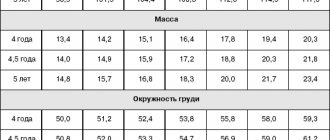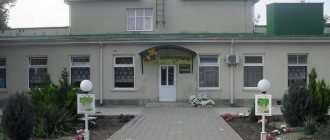Techniques of various types of walking
Basic types of walking
for children of the younger group
— Walking is normal.
The foot is placed on a support from the heel, then rolls over the foot onto the toe into a push-off (if possible with the leg straightened at the knee). The movements of the arms are calm - the arms bent at the elbows alternately rise forward no higher than chest level, then are pulled back with the elbows up, the hand is approximately at waist level. The head is raised, the shoulder girdle is not tense, the stomach is tucked.
— Walking on toes.
Performed on straighter legs. The steps are short, the body is straightened and taut. The foot is placed on the forefoot (on the toes), the heel does not touch the surface. Hand movements are insignificant, they are somewhat relaxed. They can be placed on your belt or behind your head. At the same time, the shoulders are lowered, the posture is relaxed.
— Walking with high knees
. The movements are energetic and clear. The foot is placed first on the front part, then on the entire foot. The steps are short but confident. The leg bent at the knee rises forward and upward. The thigh takes a horizontal position, the shin forms a right angle with the thigh, the toe is pulled down. Active movements of the legs are consistent with the movements of the arms, the hands are clenched into fists. Little progress has been made. The body is straight, the head is raised.
for middle group children
— Walking on your heels.
The foot is placed on the heel, the toes are raised up. At the same time, you should not turn it too far to the sides. Arm position: elbows bent and clasped behind the back. Simulation of movements: "Penguin"
— Walking on the outer arches of the feet.
The torso is naturally straightened, the feet are shoulder-width apart, the legs are straight, the arms are bent at the elbows and located at chest level, the hands are clenched into fists, the chin is tucked, the gaze is directed forward. Shift your body weight to the inside of your right and left feet. Walk at a moderate pace.
— Walking in a half squat
. Performed on bent knees. When walking, the leg is placed on the forefoot. You should try to keep your back straight. Hands move freely. When walking, they can be placed on your belt, to your shoulders, to the sides, or behind your back.
— Walking with small and wide steps
. Movements are somewhat slow. The usual coordination of movements of the arms and legs when walking is preserved. The foot is placed by rolling from heel to toe. The approximate step length is different for children of different ages (32-35 cm at 2 years, 55-60 cm at 7 years). When performing this type of walking, you should not excessively increase the length of steps, as this can lead to disruption of the coordination of movements that is developing in children.
— Walking while stepping over objects (35-40 cm
). The teacher shows and explains that you need to step over alternately with your right and left feet without stopping, without pausing. The task is completed at an average pace.
for older children
— Walking on the outside of the foot.
The torso is naturally straightened, the feet are shoulder-width apart, the legs are straight, the arms are bent at the elbows and located at chest level, the hands are clenched into fists, the chin is tucked, the gaze is directed forward. Shift your body weight to the outside of your feet with your right and left legs. Walk at a moderate pace.
— Walking with side steps.
Can be performed forward, backward, to the right and left. The step begins with any leg: one is brought forward, the other is placed next to it. Both feet end up together, their heels touching each step. You should not turn the foot of the attached leg with the toe inward. The hands do not take part in the movement; it is more appropriate to place them on the belt. This type of walking is especially good to perform with music, given its different nature: with a march - clearly, without noticeable bending of the legs at the knees; to dance music - softly, springing on one or both legs, etc.
— Heel-to-toe walking
. This type of walking is performed by clearly placing the foot on the heel, smoothly and at the same time energetically rolling onto the toe, slightly springing at the same time and trying to rise higher. Hand movements are free, relaxed, with some emphasis (stopping) at the moment of transition to the toe
— Walking backwards
. One leg is placed back on the forefoot or on the entire foot at once. The push is made by the heel of the other foot or the entire foot at the same time. Coordinated movements of arms and legs are difficult to perform
For children of the preparatory group
— Walking in different formations
(in a column one by one, in pairs, in fours, in a circle by two, in a line.)
— Walking in combination with other types of movement.
— Gymnastic walking.
It is performed by placing the foot on the toe with a wider step, the foot is fully supported.
— Walking with a cross step.
In this type of walking, one leg is brought forward and placed in front of the other slightly to the side. Little progress has been made. The leg should be placed straight and on the entire foot. It is advisable to keep your hands on your belt, since their active movements can lead to excessive rotation of the torso and impair coordination of movements.
— Walking with lunges.
The leg brought forward is placed with the knee bent over the entire foot. The leg remaining behind stands on the toe (if possible, it should be kept straight). The push is made with the toe of the standing leg behind
- Walking backwards
. One leg is placed back on the forefoot or on the entire foot at once. The push is made by the heel of the other foot or the entire foot at the same time. Coordinated movements of the arms and legs are difficult to perform.
— Walking in a squat.
Performed with legs completely bent at the knees. When walking, the entire foot is placed. You should try to keep your back straight. Hands move freely. When walking, it is better to keep your hands on your knees.
— Walking with side steps.
Can be performed forward, backward, to the right and left. The step begins with any leg: one is brought forward, the other is placed next to it. Both feet end up together, their heels touching each step. You should not turn the foot of the attached leg with the toe inward. The hands do not take part in the movement; it is more appropriate to place them on the belt. This type of walking is especially good to perform with music, given its different nature: with a march - clearly, without noticeable bending of the legs at the knees; to dance music - softly, springing on one or both legs, etc.
— Walking with your eyes closed.
Performed in small steps, deviations from the straight direction are usually observed.
E.N. Vavilova, “Teach to run, jump, climb, throw,” M., 1983.
Outline of physical education classes in the open air for children in the preparatory group for school
Appendix No. 1. Outline of physical education classes in the open air for children in the preparatory group for school
The venue is a sports ground.
Number of children -16 (8 boys and 8 girls)
Children's clothing and footwear - tracksuit, T-shirt, flannel shirt with long sleeves, tights, woolen hat with cotton lining, woolen socks, sneakers, mittens.
Physical education equipment - 3 hoops, 4 gymnastic benches, 3-4 bags with three potatoes (balls), flags.
Lesson objectives:
- To increase children's interest in physical education, to develop endurance during high physical activity .
- Practice walking on a narrow rail of a gymnastic bench, crawling on all fours under arches or in tunnels cut into snow banks.
- Cultivate endurance, develop agility, speed, endurance , memory, attention.
I. Introductory part
Walking in a column. Walking with clear turns at corners. Slow running.
On one side of the site you run, raising your knees high, on the other - with an extended step. Then they jump on one leg.
II. Main part:
General development exercises:
"Warming up in the cold"
IP: arms to the sides, palms forward.
1 - cross your arms over your chest, clap your palms on your shoulder blades - exhale; 2 - I.p. Draw the children’s attention to deep and quick inhalation and slow exhalation in “portions.”
10-12 times at a fast pace.
"Clap Over Your Head"
I.p.: O.s. 1 - right hand to the side; 2 - left hand to the side; 3 —
hands up; 4 - through the sides down. 3-4 times.
"Chopping wood"
IP: feet shoulder-width apart, palms together. 1 - arms up, bend over - inhale; 2 - bend forward, exhale with your hands between your legs. 8-10 times.
Side bends.
I.p.: feet shoulder-width apart, hands on the belt. 1 - tilt to the right, left hand behind the head; 2 - I.p.; 3-4 - the same in the other direction. 8 times.
Squat.
IP: legs together. Hands behind head. 1 - sit down. Arching your back and spreading your elbows to the sides; 2 - I.p. 10-12 times.
Jumps.
I.p.: hands on the belt. 4 hops on the right leg, 4 on the left, 4 on both legs. 4 times.
Basic movements
Run at medium speed (1 min. 40 sec./). Slow running. Fast run. (30-40 sec.). At the teacher’s command, children alternate types of running.
Walking on the narrow slats of a gymnastic bench.
Children, one after another (in a stream), walk along the narrow slats of the gymnastic bench. For 1-2 laps, children hold their arms to the sides. Then again on the belt. 4-5 laps.
Run at medium speed. 1 min. 40 sec.
Walking.
Crawl. Children crawl in a stream on all fours under arches (in snow tunnels), run to the log and walk along it. They climb through one of the hoops and return to the arcs again. 2-3 laps.
Relay game “Planting potatoes”
Children are divided into 3-4 teams. Which stand in columns near the line. At a distance of 15-20 m from the line opposite each team there are 3 small circles. In the hands of the children standing in front of the column are bags with three potatoes (balls).
At the teacher’s signal, the first in the columns run to the holes, “plant” a potato in each hole and return, passing the bag to the next child. The team that finishes the exercise first wins. 3-4 times.
III. Final part
Slow running.
Walking.
Breathing exercises.
See: Ways to increase motor activity of 6-7 year old children in physical education classes (Diploma work)
| < Previous | Next > |
doshkolniki.org



